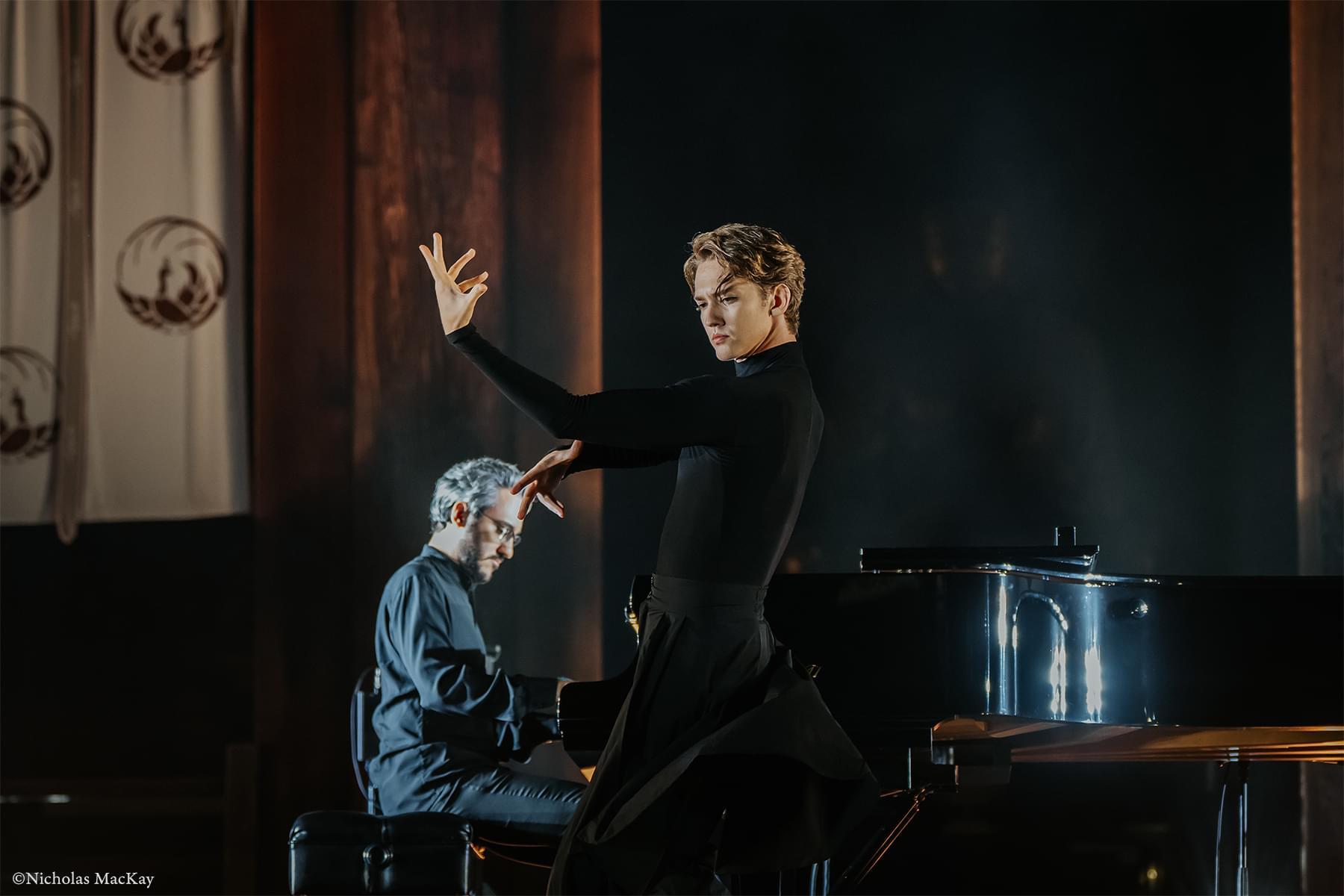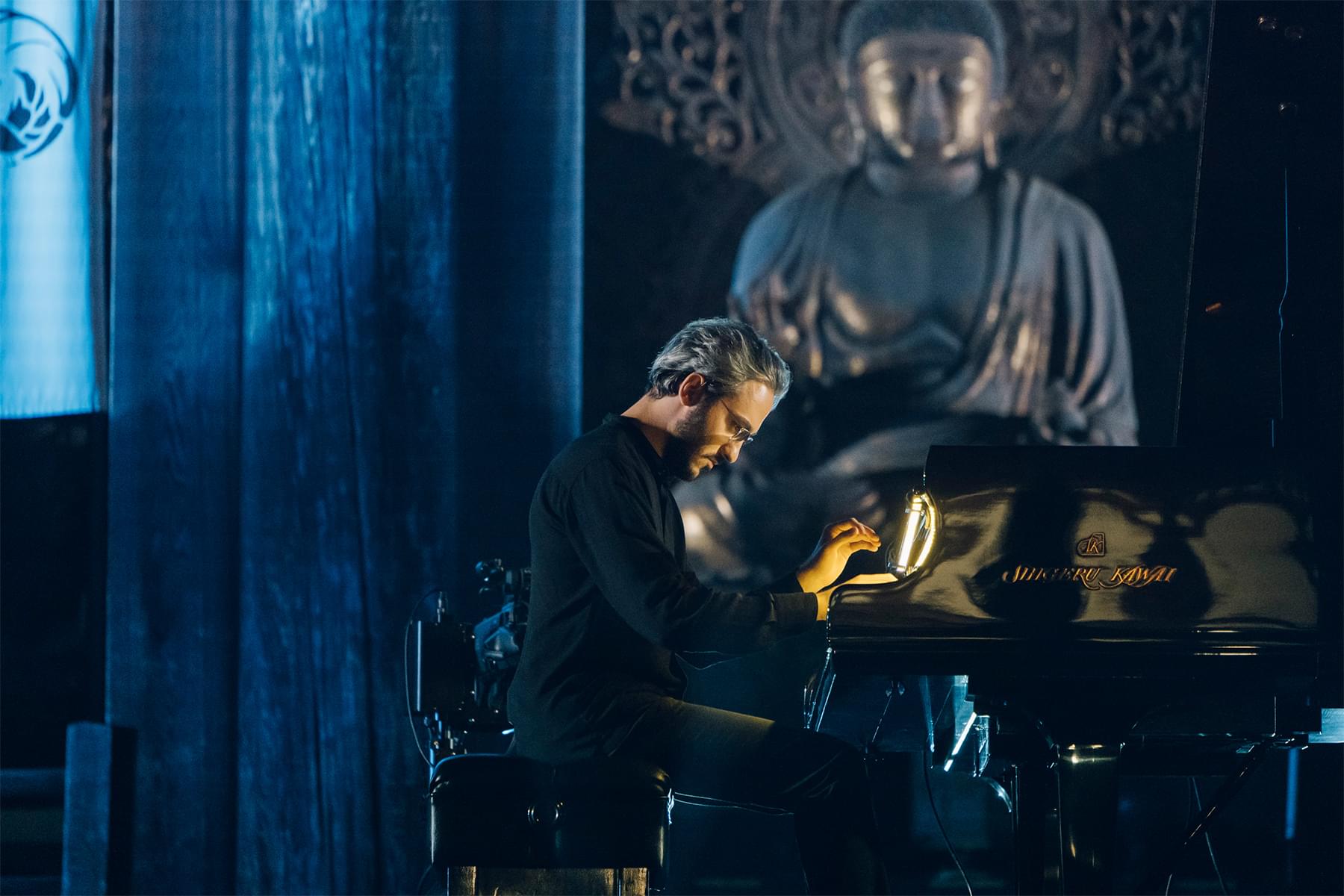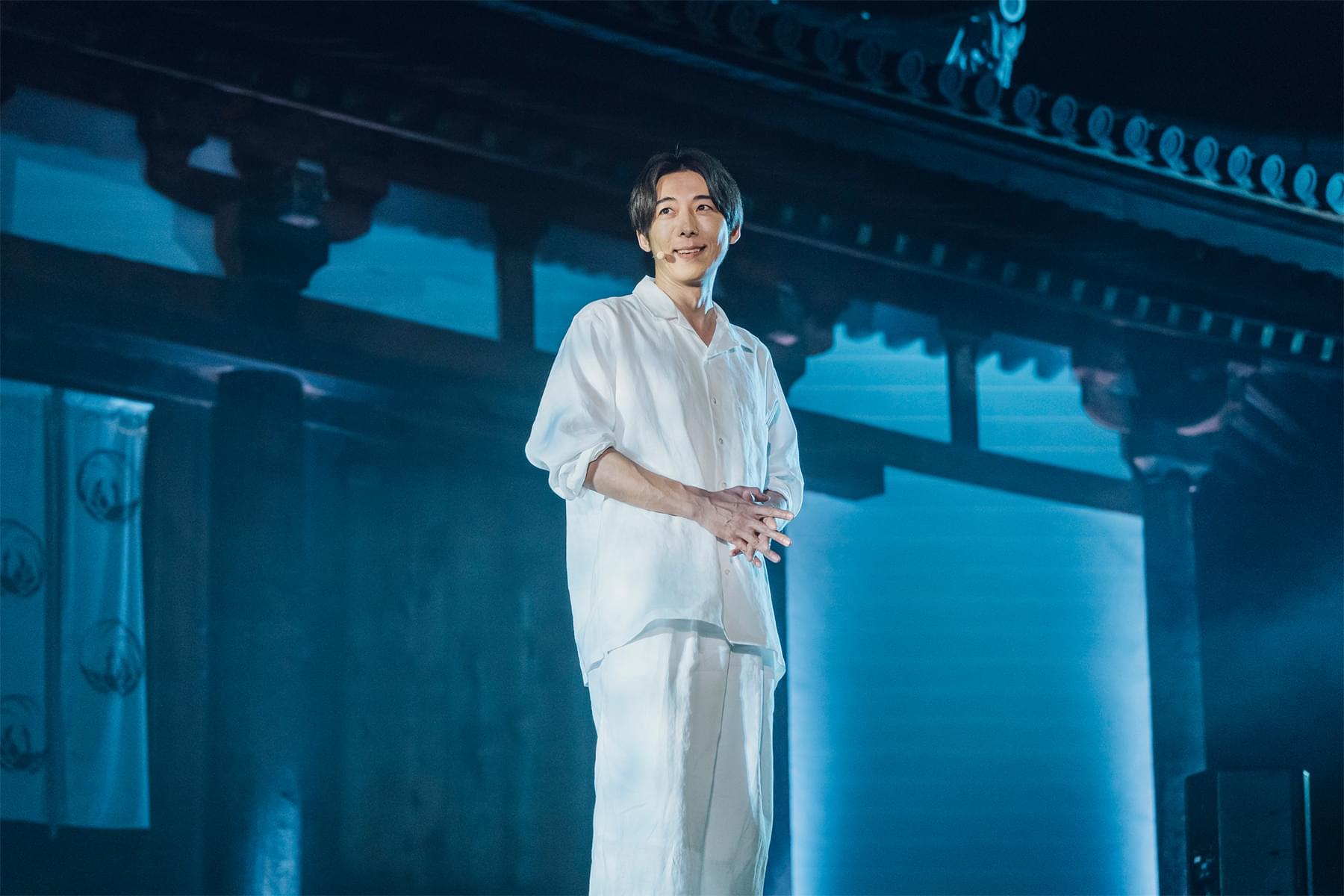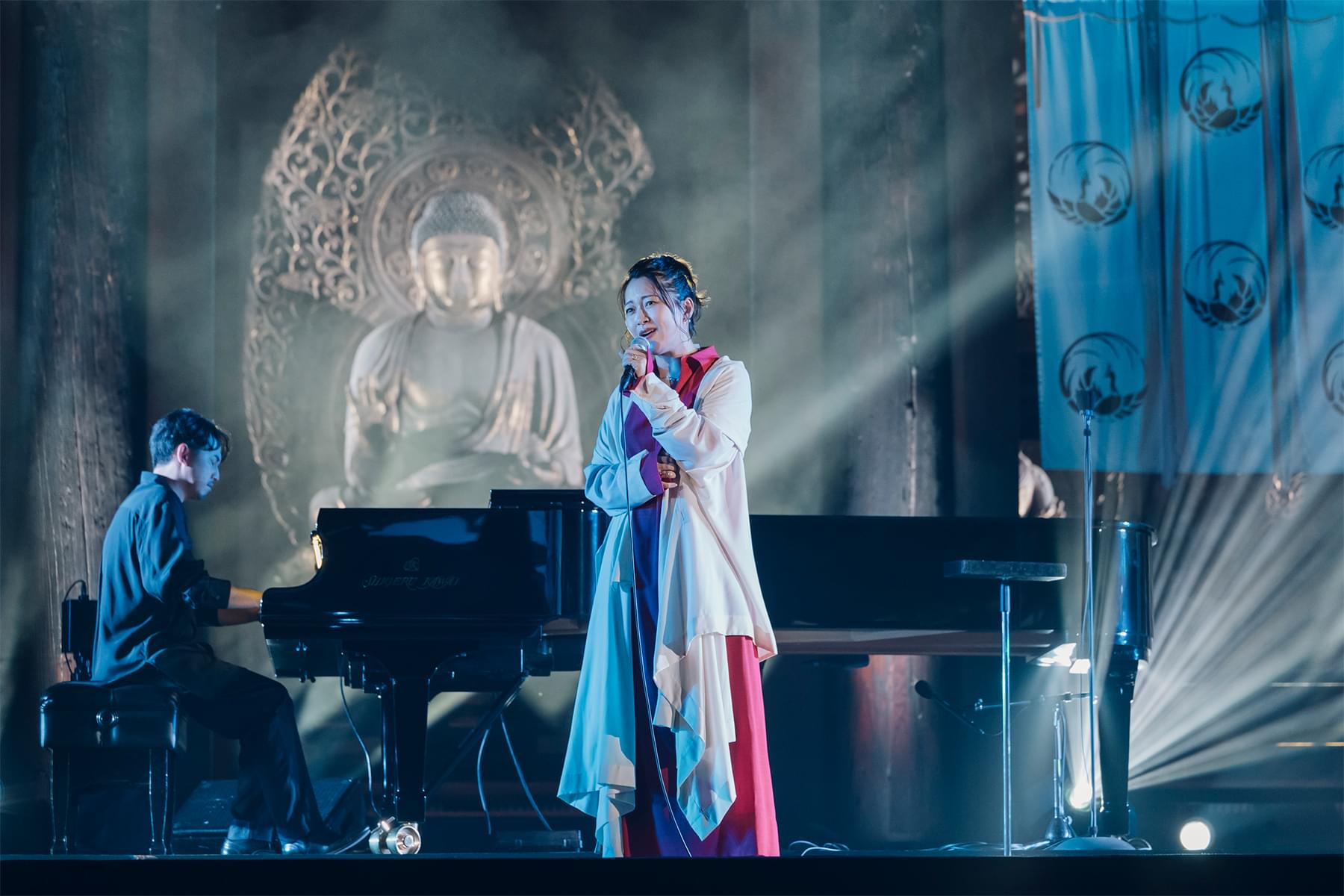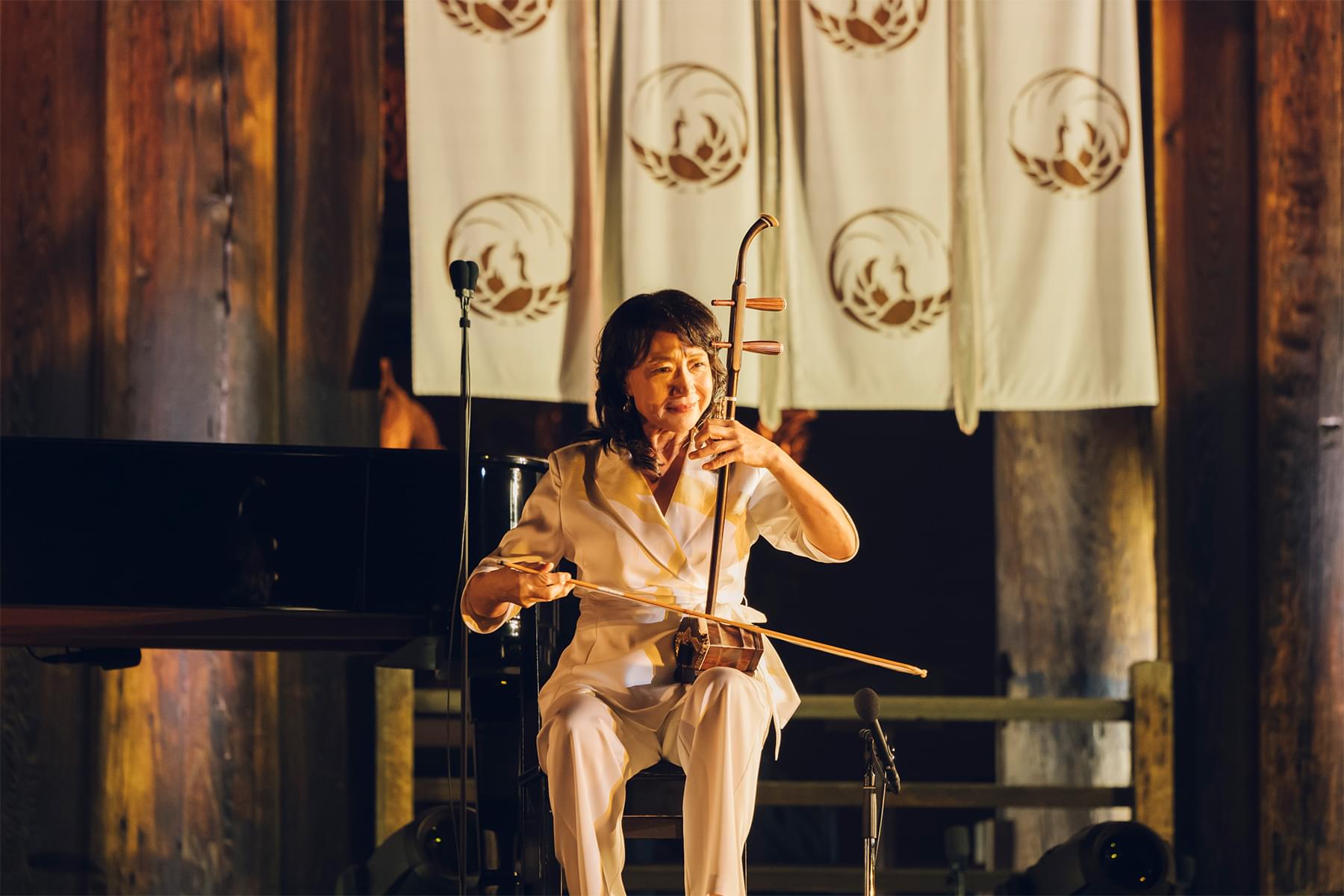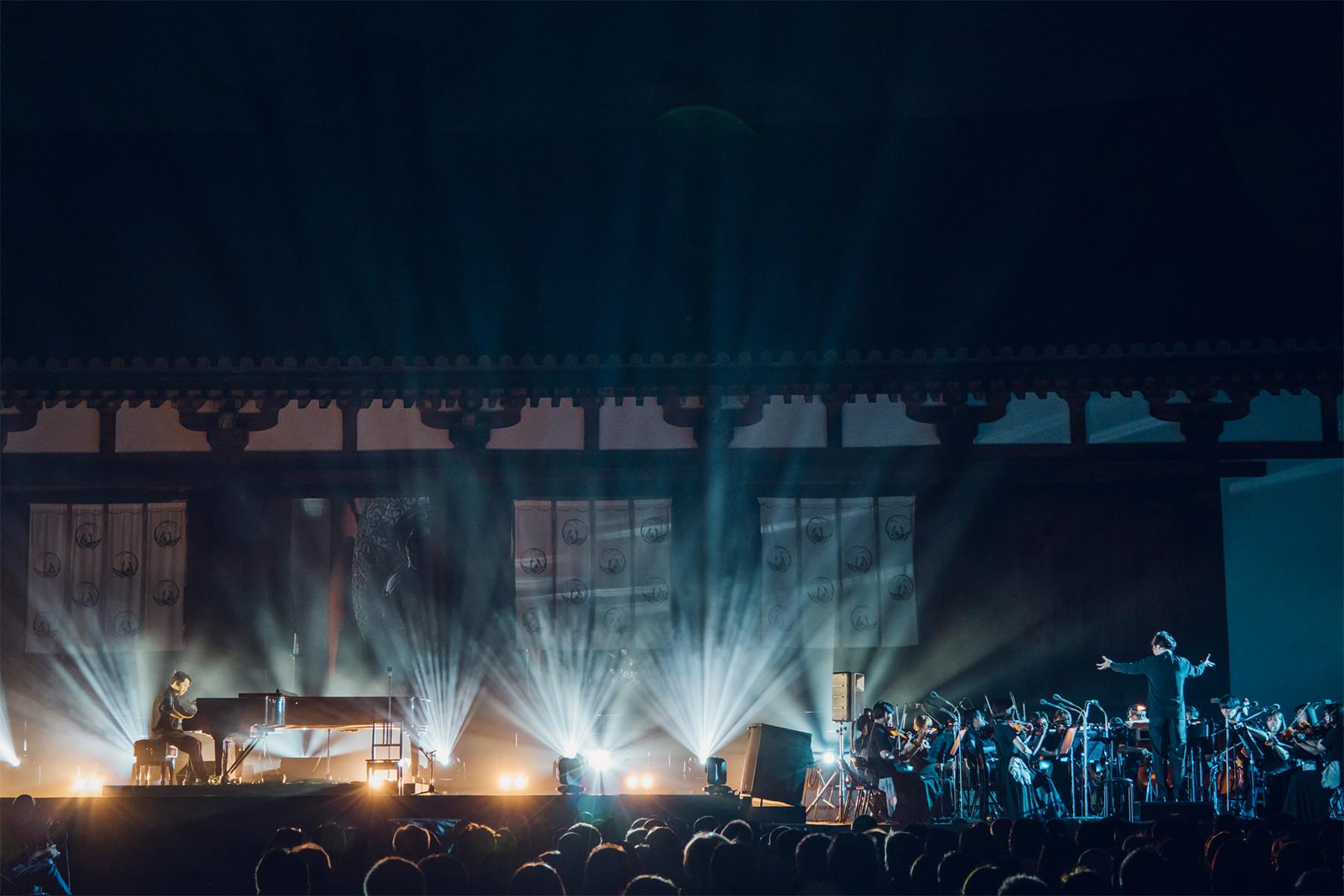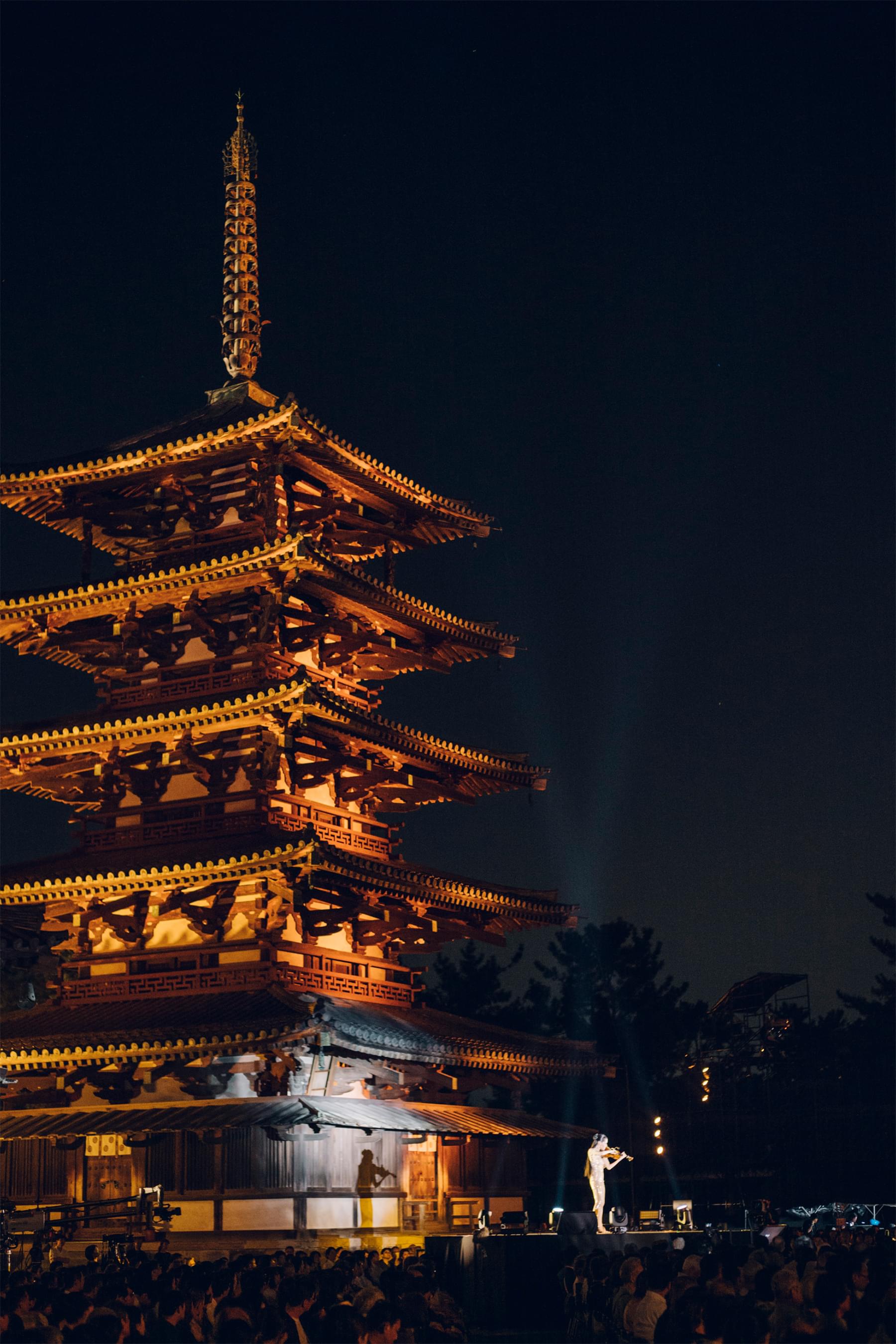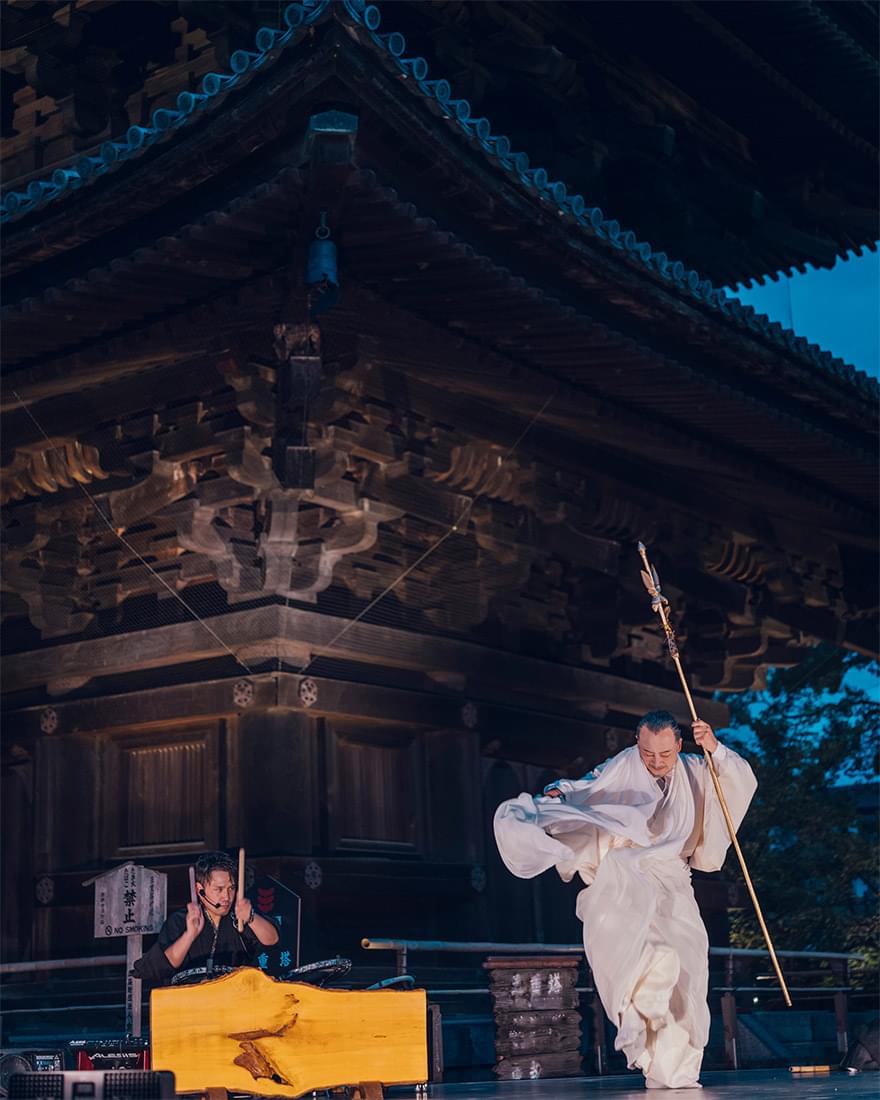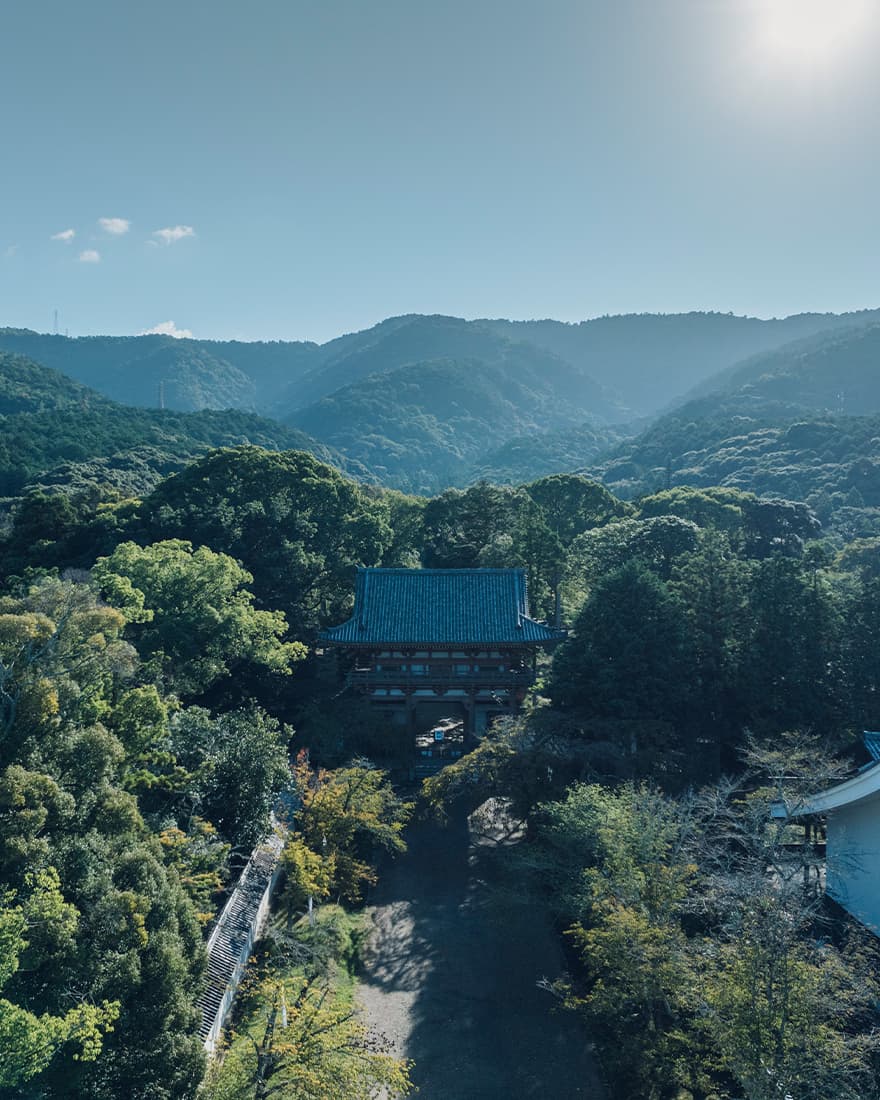2024
法隆寺
Horyuji
開催日
2024年9月7日(土)
放送日
2024年11月10日(日)

Concept
風
法隆寺には風が吹く。
飛鳥時代から変わらぬ風が。
遣隋使を派遣し、
律令の制定や
外交に力を入れた聖徳太子も、
日本に新しい風を取り入れた。
地震や病で多くの命を失った令和に
雄美で過酷な自然に包まれ、生きること。
たゆたえども沈まず、
風に抱かれ生きること。
風の声に耳をすませ、
亡き人を偲び、
未来を祈る。
The Wind
The wind blows in Horyuji.
A wind that has not changed since the Asuka period.
Even Prince Shotoku,
who sent envoys to Sui Dynasty China
to establish institutions and promote diplomacy,
introduced a new wind to Japan.
To live within majestic and harsh nature in this era,
when many lives were lost to earthquakes and diseases.
To live being embraced by wind.
Swaying in the wind, but never sinking.
Listening to the voice of the wind,
remembering the departed, and praying for the future.
Theme & Messages
from Artists
「ボレロではじまり、ボレロでおわる」/
It starts and ends with Boléro
ラヴェル作曲「ボレロ」にはあらすじがある。
セビリアのとある酒場で、踊り子がゆっくりとリズムを取り始める。はじめはそっぽを向いていた客たちも次第にその踊りに魅せられ、最後には一緒に踊り出す
ボレロは情熱の炎が広がって強くなることを表現していて、最後は踊り子が倒れて暗転になることから、生命の終わり、死にゆく者のはかなさを表現する、と解釈されることもある。
今年の法隆寺のテーマは「風」。ひとりのバレエダンサーの踊りによって幕が開き、「法隆寺に吹く風」をテーマに、様々な音が重なり、最後に、この一夜だけの「ボレロ」が完成し、風のように去っていく。
令和という時代、病や天災などで我々は何度も挫けそうになるが、人は他者と腕を組みあうことで歩き出せること自然に内包されて生きること法隆寺の風はそれを教えてくれる。
飛鳥時代からかわらない、法隆寺にたゆたう風が、ここに集う人々に、音楽と言葉で「時代と、自然と、人と、共に生きること」を語りかける。
There is a story behind Maurice Ravel’s "Boléro".
At a tavern in Seville, a dancer slowly starts tapping her feet to
the rhythm. The guests who were not interested become gradually enchanted by her dancing. In
the end, they are all dancing together.
"Boléro" expresses the flames of passion spreading and getting stronger. Finally, the dancer
falls to the ground and the scene darkens. Some interpret this as the expression of the end of
life and the transience of the life.
The theme for OTOBUTAI Horyuji is "the wind". The concert opens with the dancing of a single
ballet dancer. Following the theme of ‘The wind blowing in Horyuji,’ the various sounds
overlap, ending in a one-night-only performance of "Boléro" dissipating like the wind.
In this era called Reiwa, we may fall from illness and natural disasters, but we can rise
again and live within nature if we join hands with one another—this is what the wind of
Horyuji teaches us.
The wind blowing through Horyuji Temple, unchanged since the Asuka period (550-710 CE), speaks
to those who gather here "To live through the times, embraced by nature, and living together
with others."
飛鳥の風
Boléro/ジュリアン・マッケイ
Julian MacKay
作曲:Maurice Ravel
始まりを告げるのは奈良時代に作られた鐘。悠久の時をこえて、鐘の音に導かれるように風が吹き、今宵限りのボレロから、OTOBUTAIの幕が上がります。
At the beginning, a bell created in the Nara period (710-794 CE) rings. Beyond the ages, the wind blows as if guided by the sound of the bell, and OTOBUTAI curtain rises with a performance of "Boléro."
蘇莫者/南都楽所
Somakusha/Nanto Gakuso
聖徳太子にまつわる伝説に基づいた伝統舞楽
「聖徳太子が亀の瀬を渡る際に笛を吹いたところ、老いた猿に姿を変えた山の神が現れ、笛の音に合わせて舞い踊った」という聖徳太子の逸話に基づく舞楽の演目。
Traditonal bugaku music based on an anecdote of Prince Shotoku of when he played his flute as he was crossing the river and a mountain god disguised as an old monkey appeared and began dancing to the sound of his flute.
西からの風
草原情歌/姜 建華
Love Song on the Grasslands/Jiang Jianhua
作詞・作曲:Wang Luobin
作曲家 王洛宾の代表作。民謡のような五声音階で、中国西北部の広大な草原風景を表現しています。坂本龍一氏はこの曲がお気に入りで、共演したことを思い出します。中国の大草原から法隆寺へ、夜の西風に乗って届いたラブソング。甘く切ない、美しい二胡の音色をお楽しみください。(姜 建華)
This is a representative work by composer Wang Luobin. Using a pentatonic scale reminiscent of folk songs, it expresses the landscape of the vast plain in China's northwestern region. Ryuichi Sakamoto was fond of this piece and has performed with me. This is a love song carried by the wind from China. Please enjoy the beautiful and sentimental sound of the erhu. (Jiang Jianhua)
即興演奏「風」/アレクサンダー・ガジェヴ
Improvisation inspired by the wind of Horyuji/Alexander Gadjiev
12のエチュード 組み合わされたアルペッジョのために/アレクサンダー・ガジェヴ+ジュリアン・マッケイ
"Pour les arpèges composés" from 12 Etudes/Alexander Gadjiev + Julian MacKay
前奏曲 ハ短調 op. 23-7/アレクサンダー・ガジェヴ
Prelude in C minor op. 23-7/Alexander Gadjiev
即興演奏「風」/アレクサンダー・ガジェヴ
Improvisation inspired by the wind of Horyuji/Alexander Gadjiev
12のエチュード 組み合わされたアルペッジョのために/アレクサンダー・ガジェヴ+ジュリアン・マッケイ
"Pour les arpèges composés" from 12 Etudes/Alexander Gadjiev + Julian MacKay
前奏曲 ハ短調 op. 23-7/アレクサンダー・ガジェヴ
Prelude in C minor op. 23-7/Alexander Gadjiev
作曲:Claude Debussy ("Pour les arpèges composés" from 12 Etudes)
作曲:Sergei Rachmaninov
(Prelude in C minor op. 23-7)
1曲目は、法隆寺の風を感じながら即興演奏を行います。この夜だけの風の音色をお楽しみください。続いてお届けするのは19世紀末から20世紀初頭にかけて生まれた、2つの風。ドビュッシー「12の練習曲集」から「組み合わされたアルペッジョのために」では、分散和音(アルペッジョ)が織り成す美しいテクスチュアの中、静かな、夏のような風が私たちを優しく撫で、色や香りが漂います。2曲目には法隆寺の風を感じて、即興作品に挑戦します。この夜だけの風の音色をお楽しみください。ラフマニノフ「10の前奏曲」op.23からの第7曲は、対照的にドラマティックなロシア北部の草原の風。16分音符の疾駆がパセティックな嵐を生む。そのロシア的な力強い風を、全身に感じてください。(アレクサンダー・ガジェヴ)
Debussy and Rachmaninov, they are two types of wind. Debussy is a very quiet breeze, maybe more summer-like wind, which caresses us very gently and prepares us for the next one. Rachmaninov is a stormy wind from the northern steppes of Russia, which is a very dramatic wind, full of intensity, sometimes unpredictable and always accompanied by a lower bell that resonates throughout the piece. It ends up in a great climax and a vertigo that will shock us and shake our bones until the core. I will also do improvisation by feeling the wind of Horyuji. Enjoy the sound of the wind here just for tonight. (Alexander Gadjiev)
クレオパトラ/服部 百音
Cleopatra/Moné Hattori
作曲:Fazıl Say
法隆寺の持つエネルギーと雰囲気にぴったりと思い選びました。名前の通り、エジプトを舞台に繰り広げられる闘いやクレオパトラの気性の荒さと飛び抜けた気品が入り混じった音楽です。今回は通常のコンサート形式と違う工夫も凝らしています。お楽しみに。(服部 百音)
I chose this piece because it fits the strong energy of Horyuji Temple. As the name suggests, the music tells you a story in noble Egypt and Cleopatra's temperamental and extraordinary elegance. (Moné Hattori)
時代を吹き抜ける風
山村余情/原 摩利彦 アンサンブル
Impression of Mountain Village/Marihiko Hara
Ensemble
作曲:Marihiko Hara
かつて日本からニューカレドニアへと渡った移民の2世、3世の人たちと知り合い、その交流は今も続いていますが、彼らが胸に抱く日本の豊かな自然の風景が作曲のインスピレーションとなっています。また新作歌舞伎「野田版 桜の森の満開の下」(歌舞伎座、2017)ではテーマ曲として邦楽器アレンジで演奏されました。タイトルは夭折した詩人・李箱の同名随筆によるものです。アルバム『Landscape in Portait』に収録。(原 摩利彦)
I met second and third generation immigrants whose ancestors once left Japan for New Caledonia and we remain friends today. The rich natural scenery of Japan that they hold in their heart was the inspiration for this music. This song was also adapted using Japanese instruments as the theme music for "the Noda version of Sakura no Mori no Mankai no Shita" (the Kabuki-za Theater, 2017) by the new Kabuki production. The title comes from an essay by Yi Sang, a poet who died young. The music is recorded in the album, "Landscape in Portait." (Marihiko Hara)
星めぐりのうた/坂本 美雨 + 原 摩利彦 アンサンブル
The Song of the Circling Stars/Miu Sakamoto +
Marihiko Hara Ensemble
in aquascape/坂本 美雨 + 原 摩利彦 アンサンブル
Miu Sakamoto + Marihiko Hara Ensemble
星めぐりのうた/坂本 美雨 + 原 摩利彦 アンサンブル
The Song of the Circling Stars/Miu Sakamoto + Marihiko Hara Ensemble
in aquascape/坂本 美雨 + 原 摩利彦 アンサンブル
Miu Sakamoto + Marihiko Hara Ensemble
作詞・作曲:Kenji Miyazawa (The Song of the Circling Stars)
作曲:Ryuichi Sakamoto / 作詞:Miu
Sakamoto (in aquascape)
自然の声を聴きながら生きた宮沢賢治が残してくれた「星めぐりの歌」、私の父親が十代だった私に残してくれた「in aquascape」。大切な楽曲を、悠久の時を感じながら原摩利彦さんと一緒に演奏できるのがとても楽しみです。(坂本 美雨)
"The Song of the Circling Stars" written by Kenji Miyazawa, who lived listening to the sounds of nature, and "in aquascape", the music my father left for me as a teenager. I truly look forward to the opportunity to play these two special compositions with Marihiko Hara, feeling everlasting time. (Miu Sakamoto)
Behind the Mask/東北ユースオーケストラ
Tohoku Youth Orchestra
作曲:Ryuichi Sakamoto
1979年にリリースされたYMOのアルバムに収録された曲です。2018年の公演で、坂本龍一監督が弾くピアノの音がオーケストラと相まって心地よかったのを覚えています。テクノポップの特徴的なリズムを意識した演奏をしたいと思います。(東北ユースオーケストラ ヴァイオリン 市川 真名)
This is a song that was included on YMO’s album released in 1979. We remember the pleasant sound of the piano that Director Sakamoto played with the orchestra during the 2018 performance. We would like to perform with an awareness of the characteristic rhythms of techno-pop. (Tohoku Youth Orchestra Vn. Mamei Ichikawa)
ノクターンとタランテラ/服部 百音 + アレクサンダー・ガジェヴ
Nocturne and Tarantella/Moné Hattori + Alexander
Gadjiev
作曲:Karol Szymanowski
水の上で何かが揺蕩うような美しい夜想曲に始まり、覚醒して狂喜的に踊り明かすタランテラが続きます。タランテラは皆さんも聴きながら踊り出せるような音楽です。アレックスのクリアなピアノの音と一緒だとどんな音像が立ち上がるのか今から楽しみにしています。(服部 百音)
Begins with a beautiful nocturne, as if something is shimmering on the water, followed by a tarantella that makes you dance madly in passion and joy. I’m looking forward to discovering the sound with Alexander. (Moné Hattori)
偲ぶ風
The Last Emperor/姜 建華 + 東北ユースオーケストラ
Jiang Jianhua + Tohoku Youth Orchestra
作曲:Ryuichi Sakamoto
映画「ラストエンペラー」の音楽は、坂本龍一さんと中国の作曲家、蘇聡が担当し、アカデミー賞作曲賞を獲得しました。坂本さんとサウンドトラックの収録をしたことは忘れられない思い出です。今夜は、坂本さんの愛した東北ユースオーケストラさんとの初共演。法隆寺の風に想いを乗せて、坂本さんへ演奏を届けます。(姜 建華)
The music for the film “The Last Emperor” was composed by Ryuichi Sakamoto and Chinese composer Cong Su, and won the Academy Award for Best Original Score. Recording for the film soundtrack with Mr. Sakamoto is a memory I will never forget. Tonight will be my first performance with the Tohoku Youth Orchestra that Mr. Sakamoto loved. I will dedicate tonight's performance to Mr. Sakamoto, remembering him in the wind of Horyuji. (Jiang Jianhua)
Merry Christmas Mr.Lawrence/原 摩利彦アンサンブル+東北ユースオーケストラ
Marihiko Hara + Tohoku Youth Orchestra
作曲:Ryuichi Sakamoto
1983年公開映画「戦場のメリークリスマス」のために坂本監督が描き下ろした作品です。この曲を演奏している時が一番坂本監督とつながっていたと感じられる曲です。力強く切ないこの曲が法隆寺に吹く風とともに能登半島地震の被災者の方や坂本監督に届きますように。(東北ユースオーケストラ トロンボーン 海津 洸太)
This piece was composed by Director Sakamoto for the 1983 film “Merry Christmas Mr. Lawrence.” The moment when we play this song makes us most connected with Director Sakamoto. We hope the power and sadness of this piece will reach both the victims of the Noto Peninsula earthquake and Director Sakamoto, carried by the wind blowing through Horyuji Temple. (Tohoku Youth Orchestra Trb. Kota Kaitsu)
未来への風
Boléro Remixed 2024/ALL ARTISTS
作曲:Maurice Ravel 編曲:Marihiko Hara
名曲には、ときに「発明」が伴います。耳に残るメロディや美しい音色に限らず、同じリズムと旋律を繰り返しながら少しずつ力をためていきフィナーレにひたすら前進する。シンプルでありながら偉大なこのラヴェルの「発明」をもとに、法隆寺に集った音楽家、そしてご来場のみなさんとの時間を記憶に刻みたいと思っています。(原 摩利彦)
Masterpieces sometimes involve a kind of invention. Not only a catchy melody or a beautiful tone, but also, by repeating the same rhythm and melody, the piece gradually builds up strength and advances to the finale. Based on this simple yet grand invention of Maurice Ravel’s, I hope to engrave this moment in my heart with the musicians and audience who have come to Horyuji Temple tonight. (Marihiko Hara)
OTOBUTAIに寄せて/
For OTOBUTAI
OTOBUTAIでは耳馴染みのあるピアノや弦楽などの西洋楽器に加え、少しめずらしい音色−雅楽やペルシャ楽器サントゥール、二胡、尺八やヴィオラ・ダ・ガンバなど−が登場します。また法隆寺境内を中心に、古代から流れ続ける水や風の音をフィールドレコーディングして集めました。かつて大陸から流れてきた風の終着地である飛鳥の地。今夜ここから新しい文化がうまれ、平和な世界への一歩となることを願います。(音楽監督 原 摩利彦)
At OTOBUTAI, in addition to the familiar sounds of western instruments like the piano and strings, some slightly rarer sounds including gagaku court music, the erhu, the Persian santur, a shakuhachi flute, and the Medieval viola da gamba stringed instrument are featured. We also made field recordings to collect the sounds of the water and wind that have continued flowing through the Horyuji Temple grounds since ancient times. Asuka was once the final destination of the wind that blew from the continent. I hope that a new culture is created here tonight and takes us a step closer to world peace. (Music Director Marihiko Hara)
ABOUT“Horyuji”


Artists
-
アレクサンダー・ガジェヴ Alexander Gadjiev
Piano
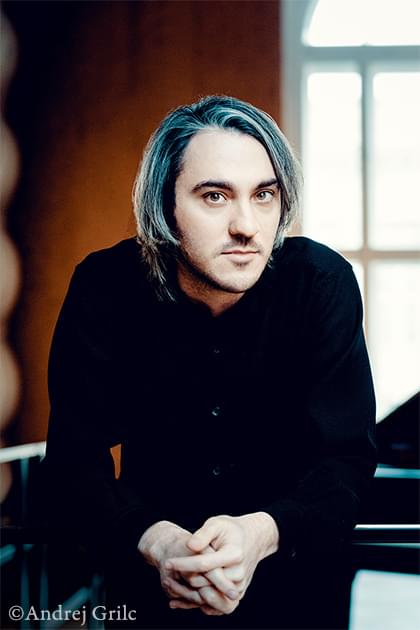
2021年10月、第18回ショパン国際ピアノ・コンクールで第2位及びクリスチャン・ツィメルマン賞(ソナタ最優秀演奏賞)を受賞。
2021年7月シドニー国際ピアノ・コンクールで優勝。
2018年 モンテカルロのワールド・ピアノ・マスターズで優勝。
2015年 第9回浜松国際ピアノ・コンクールで優勝および聴衆賞を受賞。
ゴリツィア(イタリア)でピアノ教師である両親のもとに生まれる。9歳でオーケストラと初共演、10歳で初リサイタルを開いた。17歳で優等な成績をおさめ学位を取得したことで、イタリアの教育機関で最高評価を得た若手音楽家だけが競うコンクール「プレミオ・ヴェネツィア」(2013年)への出場を許され、覇者となった。その後2015年から現在まで出場するコンクールでは、ほぼすべて優勝している。2019年には BBCニュー・ジェネレーション・アーティストに選ばれた。
これまでルイージ指揮/RAI国立響、ゲルギエフ指揮/マリインスキー劇場管をはじめ、指揮者ではズービン・メータ、テミルカーノフ、井上道義、広上淳一、山田和樹らと共演している。ロンドンのウィグモアホールでは2024年より毎年リサイタルを行う予定。またヴェルビエ音楽祭や、オールドバラ音楽祭などにも参加している。Alexander Gadjiev, winner of numerous prizes such as International Chopin competition Warsaw (2nd prize) and Sydney (1st prize) both in 2021, as well as « BBC New Generation Artist » from 2019-2021, owes his musical experience and Central European culture to his family and his hometown, the Italian-Slovenian border town of Gorizia, a natural crossroads of peoples, cultures and languages.
Alexander Gadjiev regularly accepts invitations from Europe, Asia, the USA, including: Verbier Festival, MiTo Festival in Turin, "Chopin" Festival in Duszniki, Piano Festival Rafael Orozco in Cordoba, Ljubljana Festival, Bologna Festival, Settimane Musicali at Teatro Olimpico in Vicenza, Festival Animato de Paris, Salzburg Festival, Festival International de Piano de La Roque d'Anthéron, Teatro La Fenice, Salle Gaveau in Paris, Moscow Conservatory, Aldeburgh Festival, concert halls in Salt Lake City, Istanbul, Barcelona, Rome, Milan.
From the 2022/23 season, Alexander Gadjiev is‚ Artist in Residence' at the Unione Musicale in Turin for three years and will be presented at the Wigmore Hall until 2028.
In June 2024 he will perform at Maggio Musical Fiorentino under the direction of Maestro Zubin Mehta and will have his debut at Vienna Musikverein.
His latest critically acclaimed album on CAvi-music in May 2022 features compositions by Alexander & Nikolai Tcherepnin & Prokofiev. -
ジュリアン・マッケイ Julian MacKay
Ballet Dancer
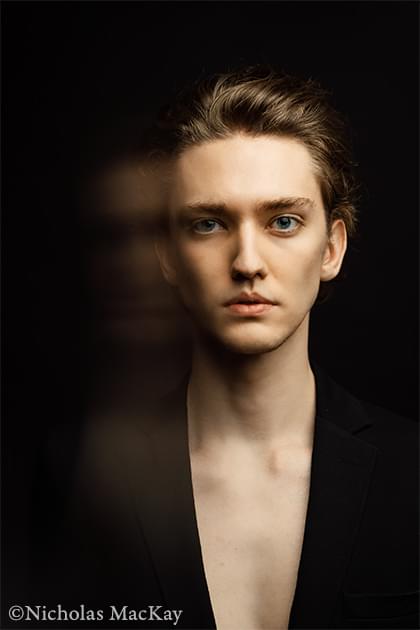
米国モンタナ州生まれのジュリアン・マッケイは、当時外国人最年少の11歳で世界最高峰のボリショイ・バレエ・アカデミーに入学。ローザンヌ国際バレエコンクールで研修賞を受賞したのち、英国ロイヤル・バレエに入団。端正な容姿、厳格なロシアメソッドで培った技術、情熱的な表現力の三拍子そろった彼は、大家ナチョ・ドゥアトを虜にし、2016年、ロシア名門ミハイロフスキー・バレエに移籍し、『パリの炎』『ジゼル』『海賊』などで主演を務めた。
その実力はモード界をも魅了し瞬く間に「VOGUE」「Numéro」誌が特集を組むほどに。世界の主要劇場でゲスト出演する他、22年9月からは元パリ・オペラ座エトワールのローラン・イレールが芸術監督を務めるバイエルン国立バレエ団でプリンシパルとして活動。カルティエのアンバサダーを務めたり、パリコレに出演したりとバレエ界にとどまらずマルチに活躍している世界で最も話題のバレエ界の貴公子。Julian MacKay is the first American to graduate from the Bolshoi Ballet Academy with a full Russian Diploma having completed both the upper and lower school. He received medals in five consecutive international ballet competitions including gold medals at the Istanbul and Beijing International Ballet Competitions, and YAGP. Graduating in the top of his class, he was hailed as "Apollo" and the next Nureyev by Russian dance critics.
Age 17, Julian joined The Royal Ballet in London as their 2015 Prix de Lausanne prize winner and nine months later, upon invitation from Mikhail Messerer, joined The Mikhailovsky Theatre in St. Petersburg as a Second Soloist.
At 19 years old, he was promoted to First Soloist and danced all the main principal roles at Mikhailovsky. In 2020 Julian was invited by Helgi Thomason to join the San Francisco Ballet as a Principal Dancer, and in September 2022 Julian joined the ranks of the Bayerisches Staatsballett as their new Principal under the Direction of Laurent Hilaire premiering with the company in a worldwide broadcast of Cinderella.
He has been featured in numerous high profile fashion magazines, television shows, and international star galas around the world.
He is also the first ever male dancer to become a Friend of the Maison for Cartier.
Julian has a Bachelors Degree from GITIS (Russian University of Theatre Arts), Moscow, and is also the Co Founder of MacKay Productions a worldwide arts production company which he started with his brother Nicholas MacKay. -
姜 建華 Jiang Jianhua
Er-hu

上海生まれ。叔父から二胡を学び、13歳からヨーロッパ・アメリカなど海外活動を開始。1974年北京中央音楽学院に入学。指揮者小澤征爾が中国訪問の際、姜建華の演奏する“二泉映月”に感動し、1978年タングルウッド音楽祭、ボストン響、サンフランシスコ響、1989年ベルリン・フィルの定期公演にソリストとして招き、多くの賞賛を得た。サントリーホール、カザルスホール、王子ホールなどのこけら落しに出演。2002年9月、日中国交正常化30周年を記念して上海大劇院で行われたリサイタルでは、中国の作曲家のコンチェルトやピアノのブルース・スタークとのジャズの世界など、二胡の新しい境地を披露し大成功をおさめた。2003年第17回日本ゴールドディスク大賞特別賞を受賞。北京の国家大劇院2008新年音楽会に小澤征爾氏とともに出演、好評を博した。世界最大級の音楽祭「ラ・フォル・ジュルネ」では、東京のほか、ナント、エカテリンブルク、ワルシャワにも出演し、世界中に二胡の魅力を発信し続けている。現在、北京中央音楽学院の教授を務める。
Ms. Jiang Jian Hua, a native of Shanghai in the People’s Republic of China, first learned the erhu under her uncle at the age of ten. She started her overseas performances, which spanned over Europe, Africa, South-East Asia and more, when she was 13 years old. She has been leading an exceedingly active career as co-performer with Japanese musicians and toured with Hidetaro Honjo, a Japanese Shamisen player and joined the Rinken Band of Okinawa Music. Ms. Jiang also appeared at the "Last Emperor" Concert, in which the music was composed by Ryuichi Sakamoto. Till date, she has released numerous CDs under Columbia and Victor label. In "The world of Erhu" released under Columbia, it includes one of the most famous theme music of all times, "the Last Emperor". With her 7th release from Victor label "Hometown Passion", she won the "Special Award" during 2003 Japan Gold Disc Awards. In December of the same year, the theme song from NHK’s TV drama was included in the CD titled "Ocean Road to China". Her latest album is entitled Hibiki and was released by Columbia in 2013. Ms. Jiang is managed by KAJIMOTO of Japan. She currently performs actively in Japan, and teaches at Beijing Central Conservatory of Music as a professor.
-
坂本 美雨 Miu Sakamoto
Singer
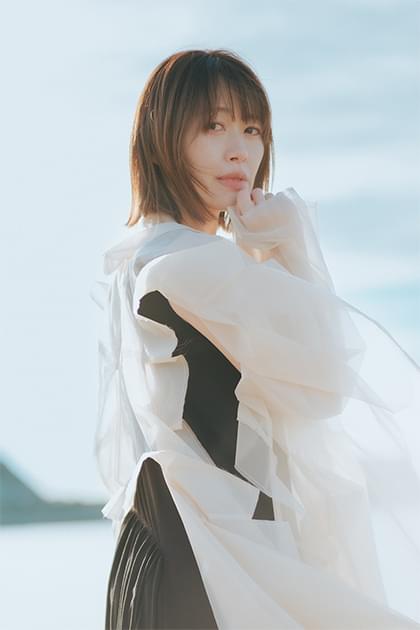
1980年、音楽一家に生まれ、東京とNYで育つ。1997年、「Ryuichi Sakamoto feat. Sister M」名義で歌手デビュー。音楽活動に加え、ラジオテレビ司会、ナレーション、執筆、演劇など表現の幅を広げている。
2011年よりTOKYOFM/JFN系全国ネット『坂本美雨のディアフレンズ』のパーソナリティを担当。
2024年4月よりNHK Eテレ「日曜美術館」司会に就任。
愛猫家として知られ、著書に「ネコの吸い方」がある。自身のSNSでも愛猫“サバ美”や娘との暮らしを綴っている。
2021年、アルバム「birds fly」をリリース。「東京2020パラリンピック」開会式でパラ楽団のボーカルとして「いきる | LIVE」を歌唱。
2022年、活動25周年を迎え、記念シングル「かぞくのうた」、娘との日々を綴ったエッセイ「ただ、一緒に生きている」(光文社)を上梓。
2023年12月に韓国(ソウル)でワンマンライブを開催した。
最新作はEP『あなたがだれのこどもであろうと』 。Born on May 1, 1980.
Her father is Ryuichi Sakamoto, and her mother is Akiko Yano.
She moved to New York at the age of 9. In 1997, at the age of 16, she made her debut as a singer under the name of “Ryuichi Sakamoto feat. Sister M.” Since then, she started her singing career under her real name.
In addition to being a musician, she is also a writer, narrator and theater actor. She has hosted a nationwide radio program, “Dear Friends” (Tokyo FM, etc.) since 2011 and co-hosted Haruki Murakami’s radio program, “Murakami RADIO.” She also performs as a group, "OOAME (Yuichi Ohata + Miu Sakamoto)."
She appeared in “The Little Prince-Letter from Saint-Exupery” directed by Kaiji Moriyama in 2020. She released a new album, “birds fly” in 2021.
She is known as a “cat person” for her animal rights activities for many years and her popular book “How to Suck Cats” and her loving cat, Sabami. She is also one of the founders of "Children's Lives are Children's," a group to reduce child abuse.
She gave birth to her first daughter in 2015, and posts daily about the life with her cat and daughter. -
東北ユースオーケストラ Tohoku Youth Orchestra
Orchestra
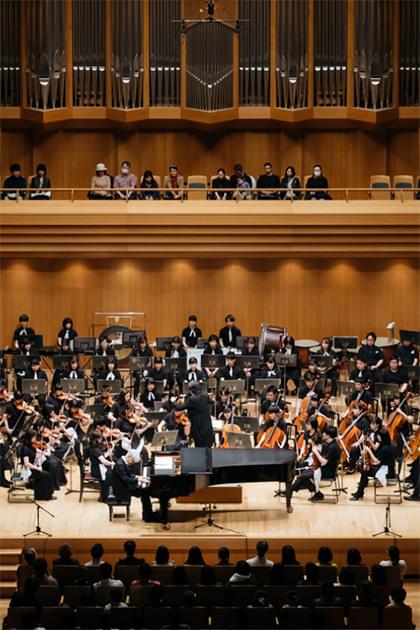
東北ユースオーケストラは、音楽家・坂本龍一の「東日本大震災で被災した子どもたちと音楽をつくりたい」という想いから、2013年に編成されました。被災三県(岩手県・宮城県・福島県)を中心に、小・中・高・大学の子供たちが活動します。活動の目的は演奏にとどまらず、子供たちが音楽家による指導や交流を通じて、世界を知り、経験する「成長の場」と考えます。子供たちが周囲の大人や東北全体に活力を与え、新しい未来をつくることを目指します。 ”音楽でしか表現できないことが、沢山ある。言葉では伝えられないことも、音楽では伝えることができる。私たちは音楽を通して多くの感動を伝えていきたい。”震災を乗り越えて生まれた強くて美しい音楽を、東北から世界へ届けていきます。
指揮:高井 優希Led by the artist Ryuichi Sakamoto, an idea came up for The Tohoku Youth Orchestra for an activity “School Music Revival” for the students affected by the Great East Japan Earthquake in 2011. Sakamoto then wished to make music with the children there and organized the orchestra in 2013. Students of primary, junior high, high schools and universities of three prefectures (Iwate, Miyagi, Fukushima) damaged by the earthquake are mainly taking parts of the orchestra. This platform is not only to perform music but also presents them a “field to grow” by learning from talented musicians and interact with others to get a global perspective. We are convinced that the children will give strength to the community and to the Tohoku area as a whole and bring us a bright future. “There are many things that only music can express. Music can express what words cannot. We wish to impress many people through music.” Strong and beautiful music born by overcoming the disaster will take off from Tohoku to the world.
Conductor: Yuki Takai -
南都楽所 Nanto Gakuso
Court Dance
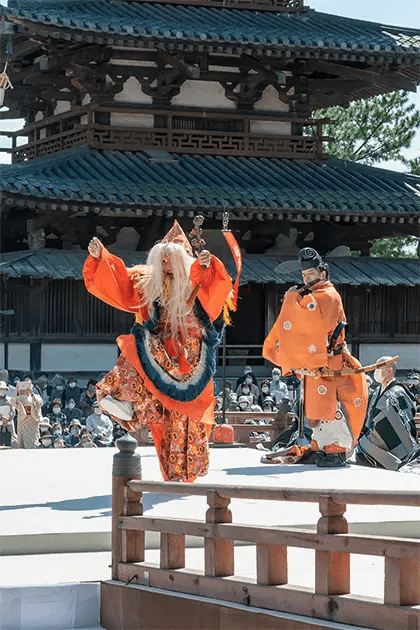
奈良時代より春日大社や南都の大寺の祭礼や法会に専属の楽団として奉仕し続け、平安後期(西暦1000年頃)になると京の都の南に位置することから南都楽所(なんとがくそ)と称して組織だてられ、現在は公益社団法人南都楽所により伝統行事への奉仕のみならず春日大社萬葉植物園での萬葉雅楽会としての雅楽公演をはじめ、様々な機会を得て講演・演奏するなど先人の偉業を広く伝えている。その活動中最も重要なものは、大和の年中行事の最後を飾る『春日若宮おん祭』での奉仕で、この祭礼は日本の伝承芸能の宝庫ともいうべき性格をもつものであり、国の重要無形民俗文化財に指定されている。
Since the Nara period (710-794), it has continued to serve as an exclusive orchestra for festivals and memorial services at Kasugataisha Shrine and the great temples of Nara. Around the year 1000, it became an organization named Nanto Gakuso for its location south of the capital, Kyoto. Today, the Nanto Gakuso Public Interest Incorporated Association still serves at traditional events, but also gives lessons and performances on various occasions, such as Gagaku performances at the Manyo Gagaku Festival held at Manyo Botanical Garden, widely sharing the achievements of their predecessors.
The most important of these activities is at the Kasuga Wakamiya Onmatsuri that decorates the end of the annual events in Nara. This festival has strong character full of traditional Japanese arts and has been designated an Important Intangible Cultural Property of Japan. -
服部 百音 Moné HattoriViolin
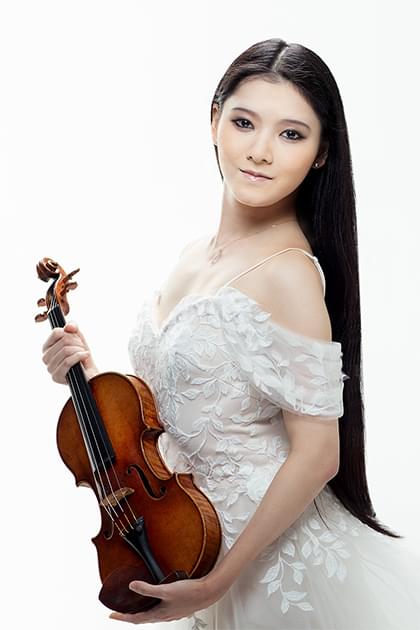
1999年生まれ。5歳よりヴァイオリンを始め8歳でオーケストラと共演。10歳でリピンスキ・ヴィエニャフスキ国際ヴァイオリンコンクールで史上最年少第1位、13歳でヤング・ヴィルトゥオーゾ国際コンクール、ノヴォシビルスク国際ヴァイオリンコンクールシニア部門に飛び級エントリーで史上最年少グランプリを受賞、2015年にボリス・ゴールドシュタイン国際コンクールでグランプリ受賞、以後様々な国際コンクールでグランプリを4回受賞。2011年イタリアでのリサイタルを皮切りに国内外で演奏活動を始める。ウラディミール・アシュケナージとスイス、イタリア公演。ハチャトリアン音楽祭、トランス・シベリアン音楽祭などにも参加し、2020年にはフランツ・リストチェンバーオーケストラとドイツツアーを行う。国内ではN響、都響、読響、東京フィル、東響、日本フィルをはじめとする数々の著名オーケストラ、指揮者と共演を重ねている。2021年NHK交響楽団とパーヴォ・ヤルヴィと共演している。2016年に発表したCD「ショスタコーヴィチ:ヴァイオリン協奏曲第1番、ワックスマン:カルメン幻想曲」はレコード芸術で特選盤等、高い評価を受けた。これまでに新日鉄住金音楽賞、岩谷時子賞、アリオン桐朋音楽賞、服部真二音楽賞、ホテルオークラ音楽賞、出光音楽賞、ブルガリ アウローラ アワードを受賞。現在国内外で演奏活動を行っている。現在、桐朋学園大学院に在籍中。使用楽器はグァルネリ・デル・ジェス。
Born in 1999. Moné began playing the violin at the age of five and first performed with an orchestra at the age of eight. By the time she was 10 years old, she won the first prize at the “International Competition for Young Violinists in Honour of Karol Lipinski and Henryk Wieniawski” as the youngest winner ever.
Moné since has won numerous Grand Prix and First Prizes at various international competitions. She has participated in the Khachaturian International Festival and the Trans-Siberian Art Festival. She toured Germany in 2020 with the Deutsches Symphonie-Orchester Berlin and the Franz Liszt Chamber Orchestra (Liszt Ferenc Kamarazenekar).
Moné has toured Europe with Vladimir Ashkenazy. From then on, she has performed with world-renowned orchestras and conductors in Japan and abroad, including Paavo Järvi, John Axelrod, and Dan Ettinger.
In 2022 she performed with the Die Deutsche Kammerfilharmonie Bremen in Germany and in 2023 with Fazil Say in Japan. Say's Violin Sonata No. 2 "Mountain Ida" was premiered in Japan. -
原 摩利彦 Marihiko Hara
Music Director
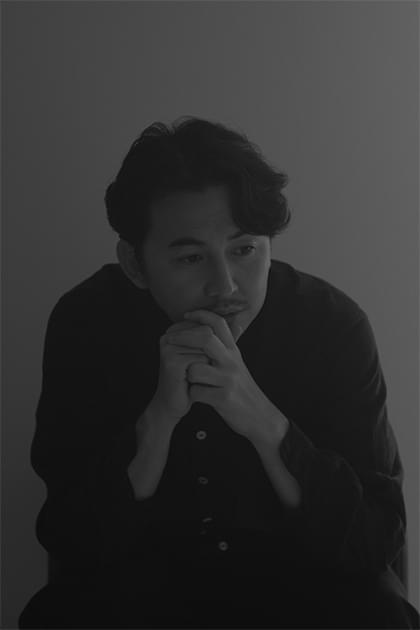
京都大学教育学部卒業。同大学大学院教育学研究科修士課程中退。静けさの中の強さを軸にピアノを中心とした室内楽やフィールドレコーディング、電子音を用いた音響作品を制作する。2020年にアルバム『PASSION』をリリースし、その後2021年に『ALL PEOPLE IS NICE』をデジタルリリース。アーティストグループ「ダムタイプ」へ参加。野田秀樹作・演出の舞台『正三角関係』『兎、波を走る』『フェイクスピア』『Q』等、ダミアン・ジャレ×名和晃平のダンス作品『VESSEL』、森山未來×中野信子×エラ・ホチルドの舞台作品『Formula』、 田中泯×名和晃平の舞台作品『彼岸より』、彫刻家名和晃平のインスタレーション作品、JUNYA WATANABE COMME des GARÇONSのショー音楽、東京2020オリンピック開会式追悼パート(森山未來出演)、映画『流浪の月』(監督:李相日 出演:広瀬すず・松坂桃李)、映画『ロストケア』(監督:前田哲 出演:松山ケンイチ・長澤まさみ)、NHKドラマ『幸運なひと』(出演:生田斗真・多部未華子)、NHKドラマ『デフ・ヴォイス 法廷の手話通訳士』(出演:草なぎ剛)、NHK『日曜美術館』新テーマソング(坂本美雨と共作)、Apple Japan や Netflix のCMなど多岐にわたって音楽を手がけている。令和3年度京都府文化賞奨励賞受賞。Marihiko Hara&Polar M として 2023 年フジロック・フェスティバルへ出演。
原 摩利彦アンサンブル:須原 杏(Violin) / 銘苅 麻野(Violin) / 角谷 奈緒子(Viola) / 多井 智紀(Cello, Viola da Gamba) / 岩崎 和音(Santur) / 工藤 煉山(尺八) / Polar M (Electric Guitar)Marihiko Hara (b.1983) is a composer who lives in Kyoto, Japan. He graduated from the Department of Education at Kyoto University. Hara released the albums "Passion," "Landscape in Portrait," and "Flora," which blend melodic piano, electronics, field recordings, beats, and traditional Japanese and Persian instruments. He has composed music for the theatrical works "Vessel" by Damien Jalet and Kohei Nawa "Omphalos" by Damien Jalet and Hideki Noda's play. Hara also collaborated on many projects with people from various fields, such as Ryuichi Sakamoto, Dumb Type, Min Tanaka, Isabel Muñoz, Raphaël Dallaporta, and Junya Watanabe COMME des GARÇONS. In recent years, he has begun writing scores for film and TV shows, such as "Wandering," directed by Lee Sang-il.
Marihiko Hara Ensemble: Anzu Suhara (Violin) / Asano Mekaru (Violin) / Naoko Kakutani (Viola) / Tomoki Tai (Cello, Viola da Gamba) / Kazune Iwasaki (Santur) / Lenzan Kudo (Shakuhachi) / Polar M (Electric Guitar)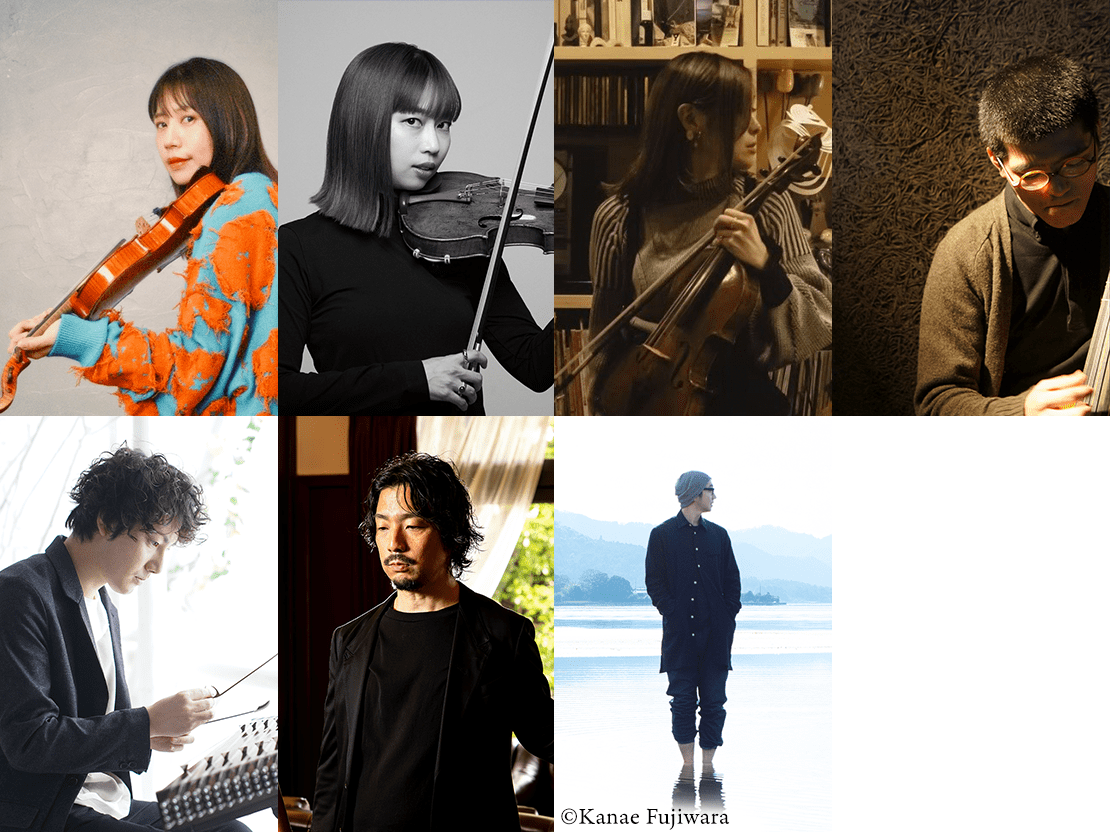
-
高橋 一生 Issey Takahashi
Recitation
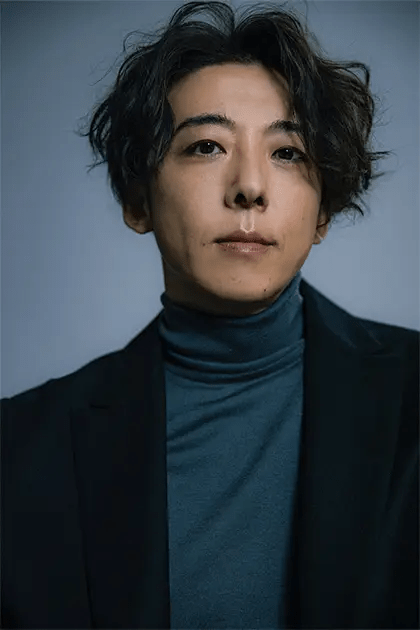
ドラマ、映画、舞台など数多くの作品に出演し、俳優として活躍中。舞台「天保十二年のシェイクスピア」(2020)で第45回菊田一夫演劇賞、NODA・MAP「フェイクスピア」(2021)で第29回読売演劇大賞最優秀男優賞を受賞。近年の主な出演作は、舞台パルコ・プロデュース「2020(ニーゼロニーゼロ)」(2022)、NODA・MAP「兎、波を走る」(2023)、映画『スパイの妻』(2020)、『岸辺露伴ルーヴルへ行く』(2023)、大河ドラマ「おんな城主 直虎」(2017/NHK)、「岸辺露伴は動かない」(2020-2022, 24/NHK)、「6秒間の軌跡 ~花火師・望月星太郎の2番目の憂鬱」(2024/EX)、テレビ朝日ドラマプレミアム「ブラック・ジャック」(2024/EX)など。
Issey Takahashi has appeared in numerous TV dramas, movies, and plays. He won the 45th Kazuo Kikuta Theatre Award for his performance "Shakespeare in Tempo 12" (2020), and the Best Actor Award at the 29th Yomiuri Theatre Award for his performance in NODA MAP's "Fakespeare" (2021). His recent major performances include "2020" produced by PARCO (2022), "Usagi, nami wo hashiru" (2023) by NODA-MAP, the movies "Wife of a Spy" (2020), ” Rohan at the Louvre” (2023), the NHK historical drama "Naotora: The Lady Warlord" (2017), "Thus Spoke Rohan Kishibe" (2020-2022, 2024), "6-second Trajectory: Fireworks Expert Mochizuki Seitaro's 2nd Melancholy" (2024), and TV Asahi Drama "Black Jack" (2024), etc.
主催:京都仏教会 聖徳宗総本山 法隆寺 MBSテレビ
協賛:大和証券グループ 日本航空
Hosted by Kyoto Buddhist Organization, Horyuji Temple, Mainichi Broadcasting System.
Sponsored by Daiwa Securities Group Inc., Japan Airlines.
